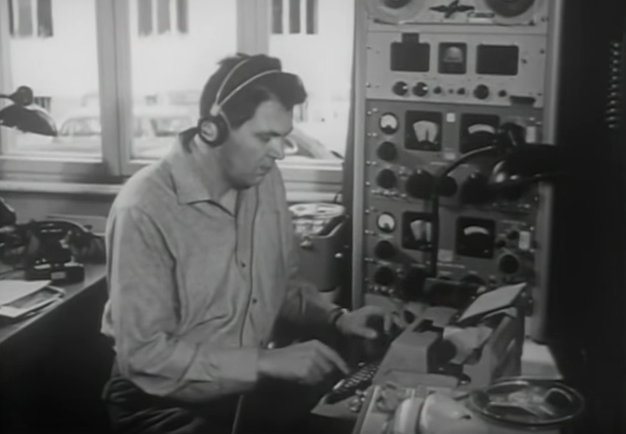If you’re in the mood for a little Cold War era nostalgia, check out this video produced by Radio Free Europe in 1964. One of the things I found most fascinating was seeing the number of rack-mounted Hammarlund SP-600s (and other benchmark receivers) at the RFE monitoring station near Munich.
Category Archives: Videos
1944 WWII Hallicrafters Shortwave Radio Promo
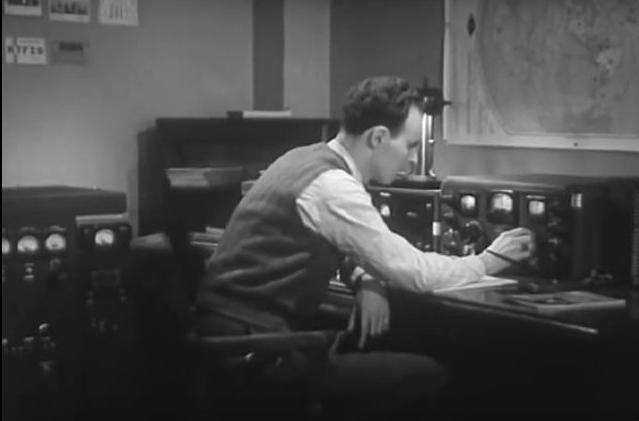 Interesting 15 min. video demonstrating the Army Signal Corps using an Hallicrafters SCR-299.
Interesting 15 min. video demonstrating the Army Signal Corps using an Hallicrafters SCR-299.
https://www.youtube.com/watch?v=TURd_XVpwvk
While certainly a promotional piece for Hallicrafters, this has great footage and captures a bit of the excitement of radio expanding into new frontiers. There is a discussion of how the radio was modified for military conditions as well as some innovations which were implemented to make such a system mobile.
As an aside, it never ceases to amaze me how clear and crisp black and white film technology of the time seems somehow better than the color images which replaced it. But that may just be me — a black-and-white guy living in a colorized world!
There is a second part to this video, as well as other WWII-era videos available on YouTube with a bit of searching, and of course don’t forget to check out the SWLing’s Shortwave Radio Archive page for more interesting shortwave audio old and new!
Robert Gulley, AK3Q, is the author of this post and a regular contributor to the SWLing Post. Robert also blogs at All Things Radio.
While Not Directly Radio Related . . .
While not directly radio related, this was too amazing not to share (so forgive me in advance! There is an Arduino involved, if that helps?!)
The video above is of a robot which can solve Rubik’s Cube in about 1 second.
I will not embarrass myself in telling how long it takes me to solve it . . . .
It is, however, easy to see how radio hobbyists could find these Arduino boards quite intriguing!
Robert Gulley, AK3Q, is the author of this post and a regular contributor to the SWLing Post. Robert also blogs at All Things Radio.
The Empire Strikes Back: Is that WWV I hear?
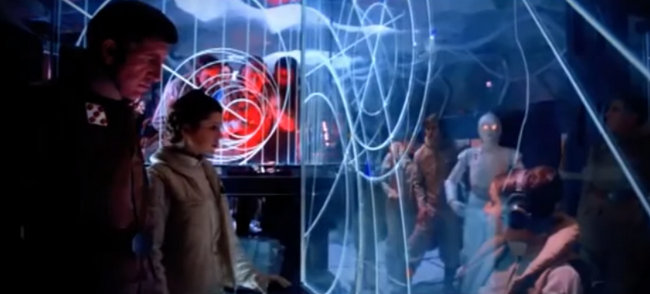 With all of the Star Wars: The Force Awakens hype going on, I remembered that, as a kid, I thought I heard WWV in a scene from The Empire Strikes Back.
With all of the Star Wars: The Force Awakens hype going on, I remembered that, as a kid, I thought I heard WWV in a scene from The Empire Strikes Back.
I looked through some video clips of the movie online and discovered it again this morning: I heard the WWV-like sound in the Battle Of Hoth scene. [Update: RadioGeek suggests this may actually be CHU’s date pips.]
This video clip will start around the :23 second mark; start listening for the metronomic tick in the background around :25 seconds and then again at :40 seconds:
https://youtu.be/HgY3rOOascY?t=23s
I may be mistaken, but I believe that sounds like 1980s era WWV. Has anyone else noticed this?
Video: How The Teleprinter Works (1940)
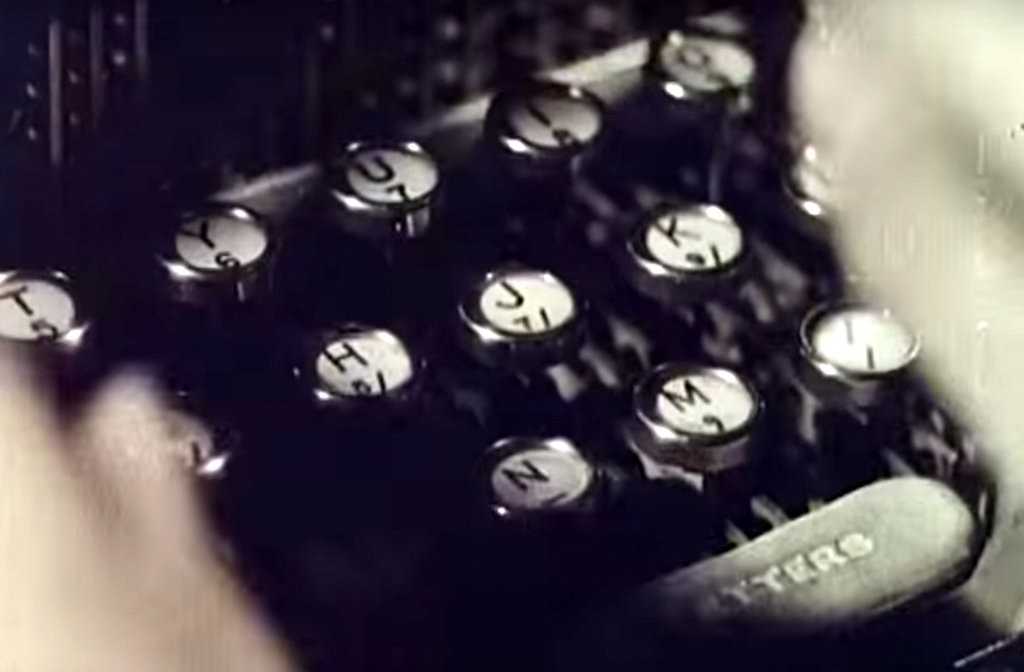
(Source: Stephen, G7VFY, via the Southgate ARC)
Produced by the GPO Film Unit. Models are used to demonstrate the working of a teleprinter. Shown is how the pressing of a key on the keyboard generates a five unit teleprinter code, is then transmitted as a serial code to the teleprinter line and finally is decoded to select the correct character on the type wheel of the printing mechanism of the receiving teleprinter.
https://www.youtube.com/watch?v=HcMHam54EOI
Video: The Skelton HF Transmitting Station
Many thanks to Jonathan Marks, who shares this short video about the history of the Skelton HF Transmitting Station:
eBay Find: the Zenith Trans-Oceanic Royal D7000Y, with Comparisons to the Sony CRF-320
 Sometimes when browsing eBay you’ll come across a hot item that wasn’t even on your wish list or Followed eBay Searches. This was the case for me early last month when I spotted a new listing for a Zenith Royal D7000Y-2 Trans-Oceanic that’s arguably the best performing T-O ever made. It’s not the most collectable (the final R7000 series has that distinction), but is the final model with the desirable band spread tuning arrangement. The D7000Y is also the last of the hand-wired Trans-Oceanics. Some claim this model has the best audio of the transistorized T-Os, too.
Sometimes when browsing eBay you’ll come across a hot item that wasn’t even on your wish list or Followed eBay Searches. This was the case for me early last month when I spotted a new listing for a Zenith Royal D7000Y-2 Trans-Oceanic that’s arguably the best performing T-O ever made. It’s not the most collectable (the final R7000 series has that distinction), but is the final model with the desirable band spread tuning arrangement. The D7000Y is also the last of the hand-wired Trans-Oceanics. Some claim this model has the best audio of the transistorized T-Os, too.
I have a soft spot in my heart for Zenith Trans-Oceanics, as the co-author of the “Royalty of Radios” reference book, the late Prof. John Bryant, was my best friend for many years. John also wrote books on Zenith’s corporate history and other models of Zenith radios. The transistorized Zenith Trans-Oceanics were unobtainable dream receivers for me when I was a teenager in the mid-1970s.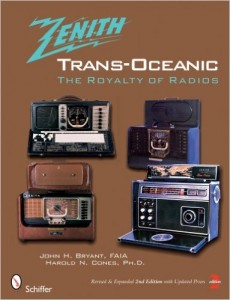
I watched this Buy-It-Now auction for three days and was very surprised it remained available, especially after noticing its superior condition compared to other auctions for the same model. Finally on the third day I pulled the trigger–I’m not a collector of vintage radios but I couldn’t miss the chance to let this fine old Zenith follow me home. At a Buy-It-Now price of $219 including cross-country shipping, it seemed like a no-brainer decision.
When the radio arrived–packed extremely well–it was in ever better condition than pictured and described (I’d call it 9.8 on a 10 scale). The package included the original hang tag, QA stickers, owners manual, service manual, marketing literature and even the original monaural earphone and AC power cord. All dial lamps and the chart light worked fine. The previous owner said the T-O was fully aligned a year ago, and indeed I found that the reception quality on the built-in whip antenna is great. I’d love to know where this receiver was stored for the last 38 years; it was clearly someone’s gently used, cherished Zenith.
________________________________
A folder of high resolution photos of this receiver can be viewed here.
Compared Against the Sony CRF-320
Besides simply enjoying receivers I get a kick out of comparing them against each other, and against various other ones owned by my radio hobby friends. Thanks to the loan of a vintage Sony CRF-320, I was able to directly compare it to my Zenith Trans-Oceanic Royal D7000Y-2 receiver. My friend’s CRF-320 is the equal of my Zenith in condition and quality. Each of us would like to own both of these radios!
This is an interesting pairing, since the Zenith was among the last of the premier, USA manufactured portable receivers (analog only, all hand-wired chassis), and the CRF-320 was an equally prestigious portable receiver of the “latest technology”–digital/analog readout with printed circuit board construction.
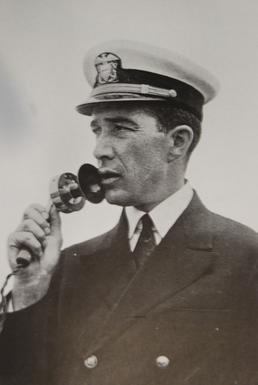 Once a leading receiver brand, Zenith did not react quickly enough to changing trends and business climate after the death of its founder, Commander Eugene F. McDonald. The 40 year old (1942-1982) proud line of Trans-Oceanics gave way to new, semi-automated methods of building receivers with inexpensive labor from Asia.
Once a leading receiver brand, Zenith did not react quickly enough to changing trends and business climate after the death of its founder, Commander Eugene F. McDonald. The 40 year old (1942-1982) proud line of Trans-Oceanics gave way to new, semi-automated methods of building receivers with inexpensive labor from Asia.
After an initial production run of the next (and last) R7000 series, manufacturing was moved to Taiwan. The receiver was built just as well as the previous Royal D7000, but used PCBs inside and the useful band spread frequency ranges were done away with (at the expense of ease of tuning). Still, Zenith T-Os couldn’t compete on price or performance against the Sony CRF-320, and the R7000 Trans-Oceanics were the last (and now most collectible) versions.
This YouTube video compares reception of these two vintage receivers with mid-morning signals on the 31 meter band, from the Seattle area:
https://www.youtube.com/watch?v=Uli6DPRJkX8
Both radios were used with their built-in whip antennas although I couldn’t extend the Zenith’s its final four inches due to ceiling height in the room.
In my opinion, the CRF-320 is superior in keeping signals steady with its AGC, but the D7000Y-2 excels in audio quality and is neck-and-neck in most other respects. The Zenith may have performed a bit better with weak signals if the ceiling in my kitchen was a few inches higher! (Both radios have substantially long built-in antennas, and each are very well matched to their circuitry for excellent reception.)
There are many references around for the Zenith Trans-Oceanic series, but not a lot has been published on the CRF-320. Here is one page with good details on the Sony: http://www.shortwaveradio.ch/radio-e/sony-crf320-e.htm
Jay Allen’s excellent article on restoring a Zenith T-O Royal D7000 has very clear photos of the receiver’s interior: http://radiojayallen.com/zenith-royal-7000/
Moral of the Story?
I’ve been active on eBay since 1998. As with garage sales, the chances of an excellent “find” increase with the time spent in the pursuit. Sometimes you just get lucky though and find a very desirable item remaining unsold for days, such as this Trans-Oceanic! It’s all about being in the right place at the right time. Since I’ve bought the receiver I’ve yet to see any other D7000s of equal or better quality, despite some with Buy-It-Now prices of up to $450 plus shipping (edit 12/16: I spotted one that appears in equal condition to mine, but for a Buy-It-Now of $675 + $40 S/H).
Guy Atkins is a Sr. Graphic Designer for T-Mobile and lives near Seattle, Washington. He’s a regular contributor to the SWLing Post.

